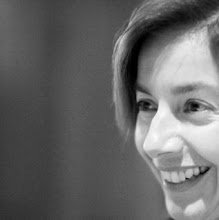How we are with the breath can make a huge difference in our mindfulness practice. And it helps knowing that the breath takes place all by itself, independent of our will.
The breath is always there, we just need to find it wherever it is most noticeable. Belly rising or falling, chest expanding or contracting, air back and forth in the throat, or more subtle flow in and out of the nostrils? We each have a place where the breath manifests itself most.
Then it is just a matter of following the breath. Not in our head, but through sensing of the moment-to-moment experience of the breath in the body. Nothing to do, only sit back and watch. Of course, not that easy, as the mind always wants to interfere.
Like
the curtain is moved by the wind, so we are moved inside by our breathing,
without doing anything for it. If you gently give up doing it, you will
experience that it comes all by itself. We should not be the educators of
breathing. Breathing should teach us how it wants to be - without our admonishing
it. ~ Charlotte Selver ~
The practice is twofold. First is to sit with the warm determination to simply follow the breath, and to bring back our awareness onto it whenever the mind wanders. Second, is to mine those unwanted thoughts for insight. What are the mind's tendencies? What happens in the body when the hindrances arise? Are there any knots or tensions? What am 'I' clinging to?
If we wait long enough, as is the case during long retreats, the mind becomes more quiet, and there comes a time, when it is just awareness and breath . . . , the absence of stress.




I am most grateful that I found your blog. I am an independently practicing Nichiren Buddhist wanting to learn about other schools of Buddhism. Thank you for the blog. I am finding it incredibly helpful.
ReplyDelete